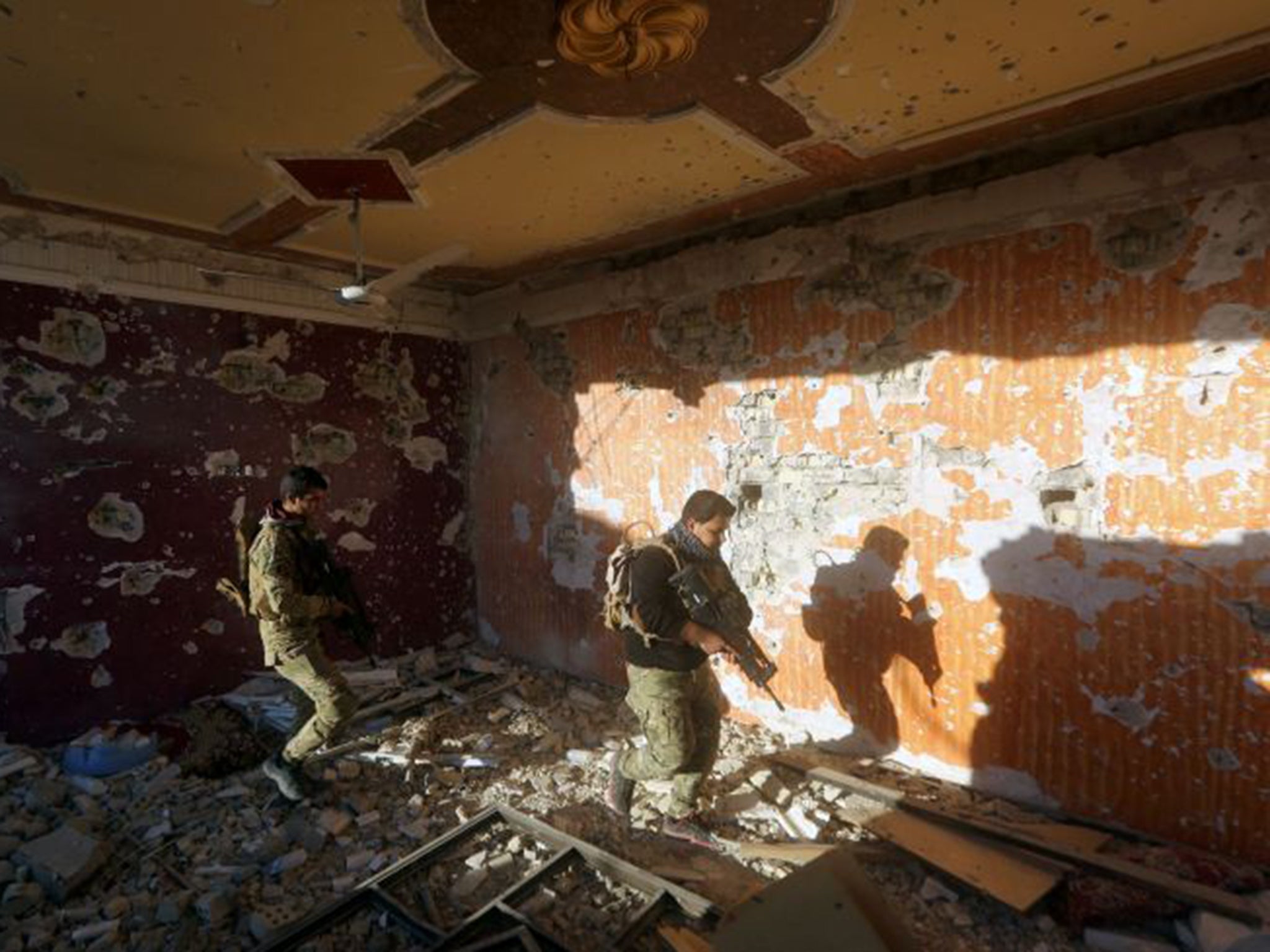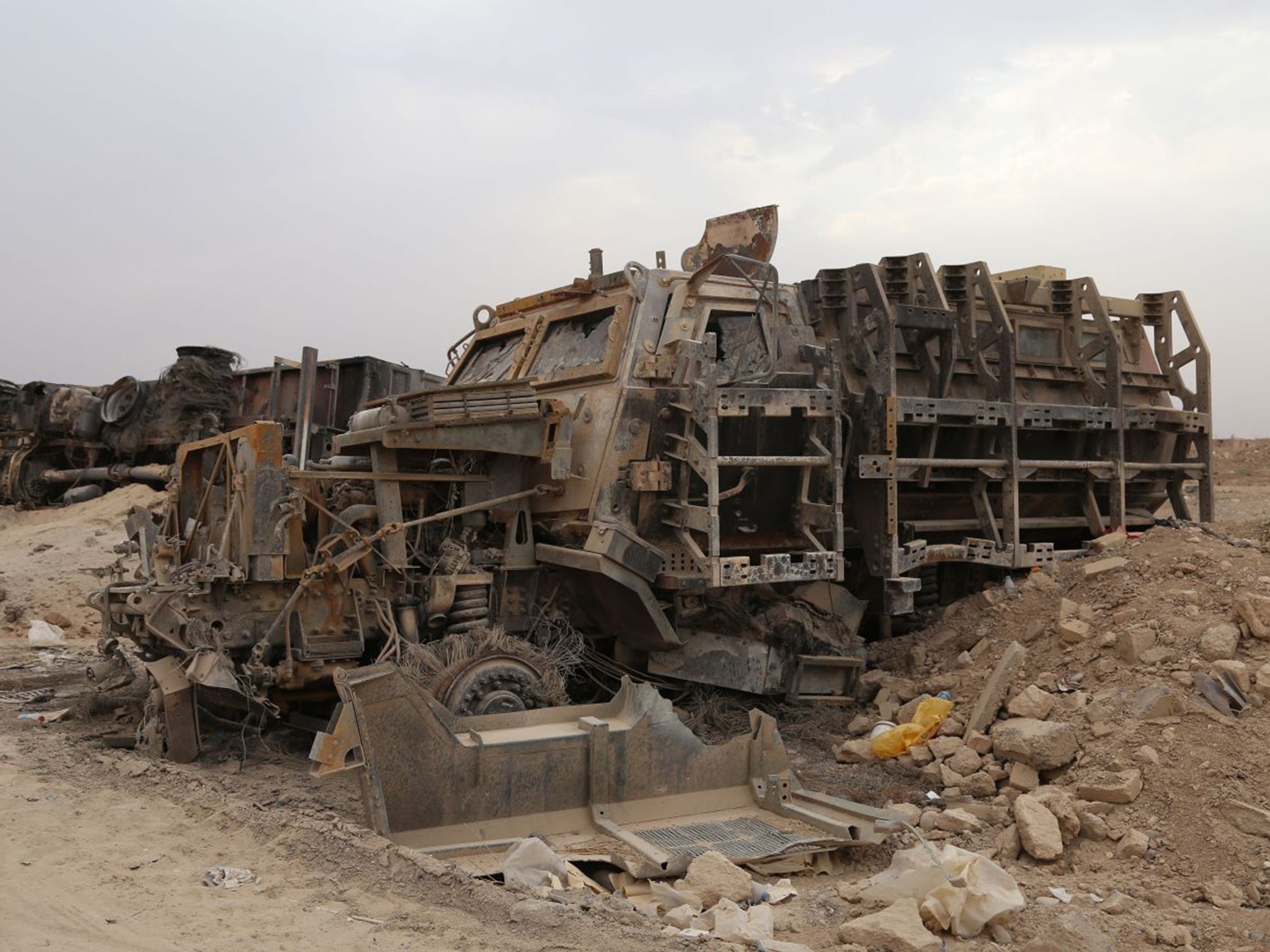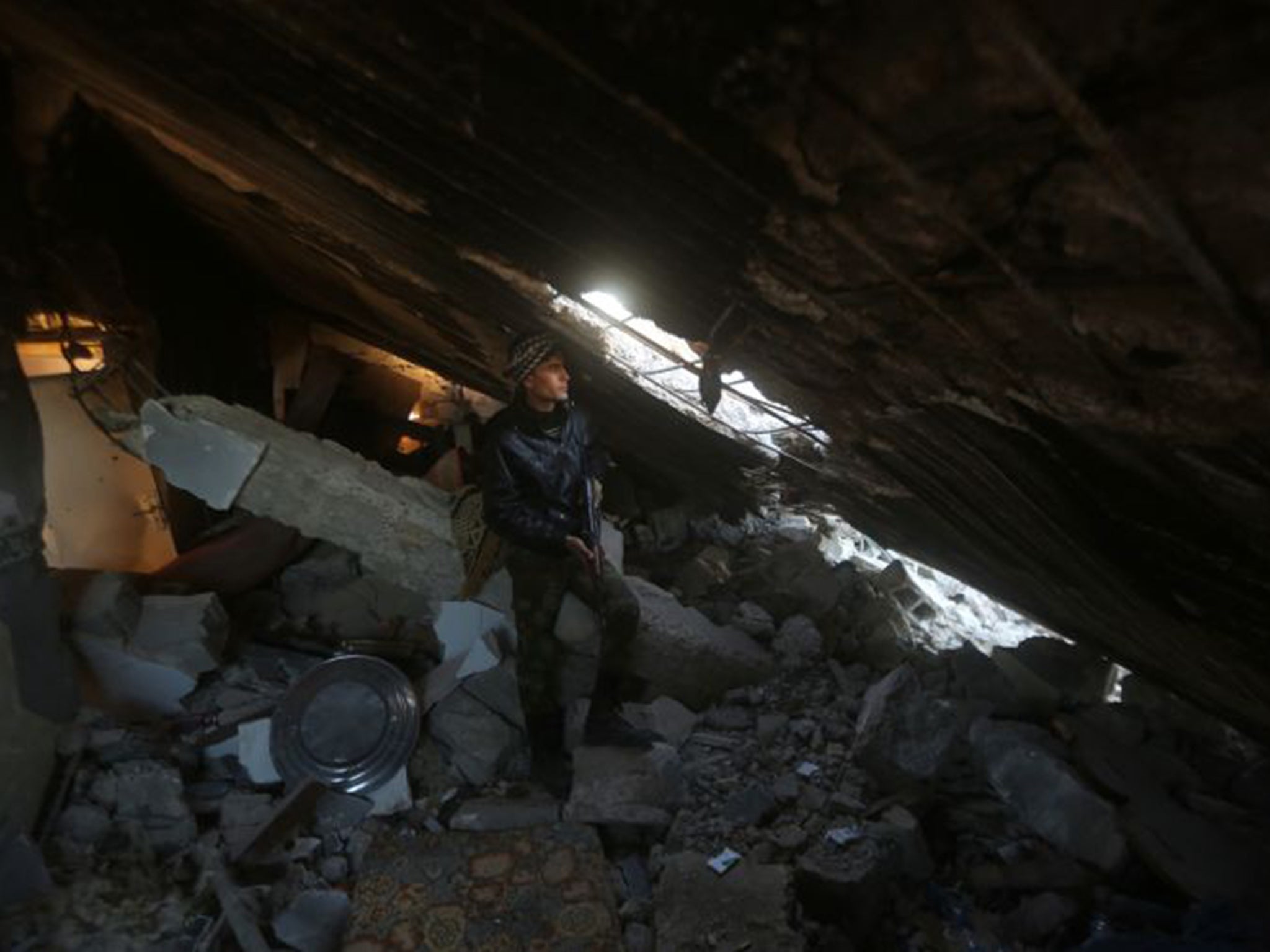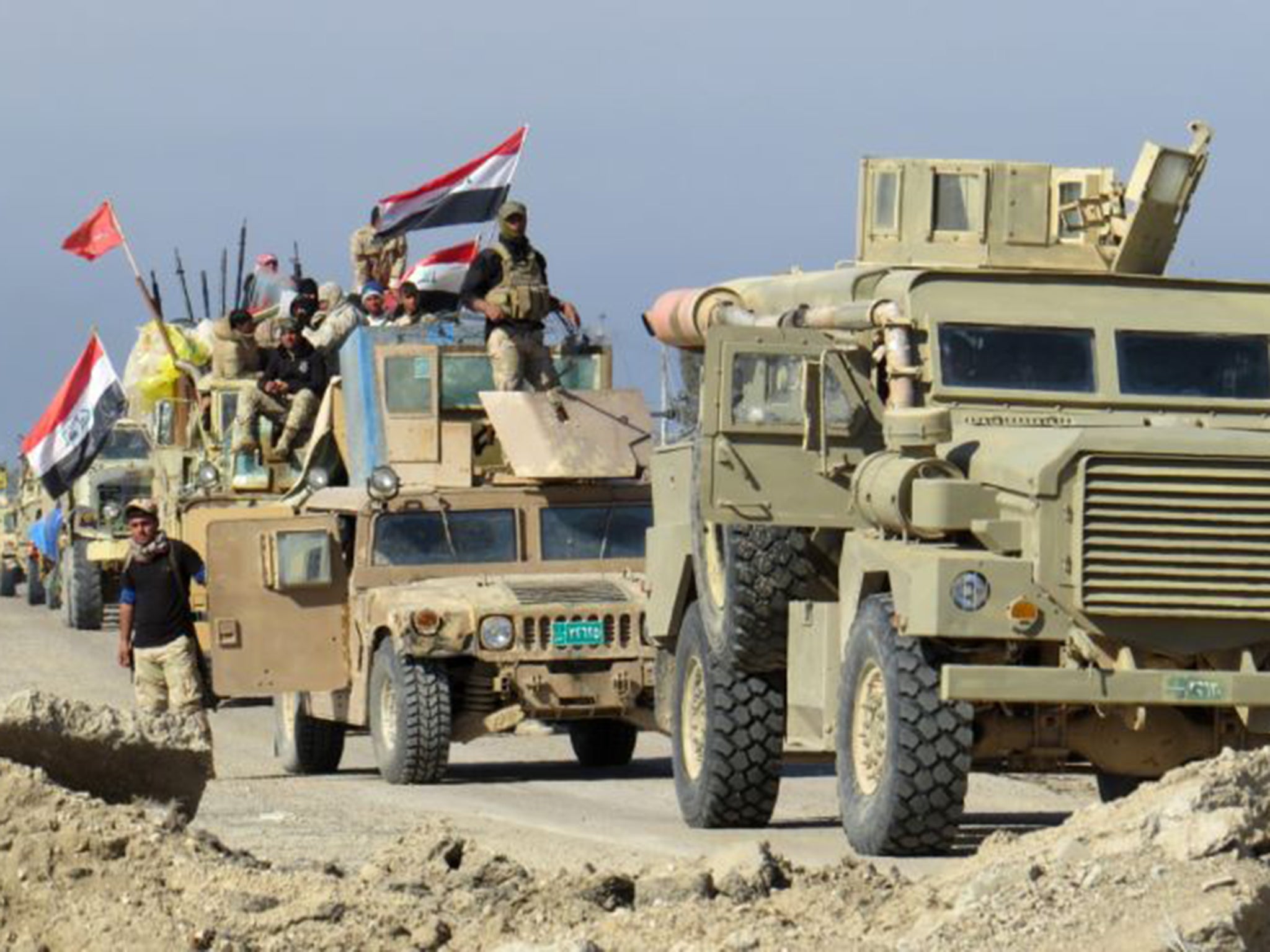Isis in Iraq: Divisions among forces fighting jihadis delays decisive push to recapture country
It could be that all concerned are dividing up the tiger’s skin before the tiger is properly dead

In fighting in the outskirts of Ramadi a week ago, Zaman Hussein, a member of the al-Hashd al-Shaabi Shia militia, was trying to repel an attack by several Islamic State (Isis) suicide bombers wearing vests packed with explosives. He says: “We killed all of them except one who had hidden himself behind an oil tanker. We were searching for him when he suddenly appeared and blew himself up.” The blast seriously wounded Zaman, who is now in the Al-Hussein hospital in the Shia holy city of Karbala with a badly broken leg, injured hand and shrapnel wounds.
Suleiman Haydar Abbas, a 20-year-old member of the Hashd, was spending his first days in the front line on 18 February in a position on Makhoul Mountain north of al-Baiji refinery, which has been the scene of prolonged battles between Isis and Iraqi government forces over the past 18 months. “I was scouting for targets 300 metres from the Isis trenches, along with three other fighters, when an Isis sniper hit me,” he recalls. The bullet shattered his thigh and he is waiting for the second of three operations needed to repair the damage.
The type of injuries inflicted on Hashd militiamen recovering in the Al-Hussein hospital reflects the kind of warfare being by waged by Isis in Iraq and Syria. Although its fighters are generally outnumbered and outgunned, they rely on tactics and weapons that a dozen years of fighting have shown to be effective. Even during the present military stalemate in Iraq, Isis continues to cause its enemies losses by using snipers, suicide bombers, improvised explosive devices (IEDs), booby traps and mortars.

The attrition rate may not high, but it is continuous. Isis is skilled at laying minefields full of pressure mines and booby traps. Hayder Daoud Abdullah, at 44 older than most of the other Hashd fighters, had entered such an area in Ramadi in a vehicle to start defusing mines. But as soon as his mine disposal team left their vehicle and started walking, one of the men detonated a mine that exploded, killing two of them and wounding another two. Mustafa Hashem, a soldier from the 17th division of the Iraqi army, who was in a hospital bed nearby after being wounded by a mortar bomb at Fallujah, is sure that Isis is weaker than before – “they have lost a lot of cities” – but their decline is gradual and there are few deserters or prisoners.
Nevertheless, Isis has lost Ramadi, the capture of which was their biggest victory last year, as well as Tikrit, Baiji and Sinjar. Road traffic is once again flowing freely along the main highway between Baghdad and the Kurdish north of the country. “I would say the road has become 90 per cent safe over the last year,” said Ali Karim, a professional driver, which was less than reassuring but clearly an improvement on the days when Isis had cut the country in two. Traffic diminishes at night time, and drivers are nervous, but it is a long time since the last serious attack. “Isis don’t initiate fighting like they used to do,” says Shaikh Maythan Zayd, the civilian director of the Al-Abbas Division, a Hashd unit formed by the Imam Hussein shrine in Karbala. He says that the division has 5,000 combatants and can draw on another 35,000 volunteers.
What keeps Isis in business is as much the divisions of its enemies as its own strength. The Hashd (popular mobilisation units) were created in the panicky atmosphere after Isis captured Mosul and were advancing on Baghdad in June 2014. Grand Ayatollah Ali al-Sistani issued a fatwa calling on people to aid the defeated Iraqi security forces. Out of this grew an organised militia force made up in part of volunteers who joined up at the time of the fatwa and in part on well-established Shia paramilitary units such as the Badr Organisation, Kataeb Hezbollah and Asaib Ahl al-Haq, all of which are deemed to be under Iranian influence. The Hashd claim to be 100,000 strong but a more realistic figure is probably between 35,000 and 50,000 combatants, though they can draw on a much larger reservoir of volunteers.

Since the fall of Mosul, the Hashd have become one more power centre in Iraq, paid for by the Iraqi state but not quite under its control. The Iraqi army has never recovered from the defeats of 2014, though it does have a limited number of elite combat units which can call in air strikes by the US-led coalition, giving it devastating fire power. Where Isis makes a stand it is pulverised by bombs and missiles, enabling the Iraqi army or Iraqi Kurdish Peshmerga to act as a mopping-up force. The US is wary of Hashd, which it views as a Shia sectarian and pro-Iranian force, while Shia leaders denounce conspiracies by the US to marginalise the Hashd in the war. A senior religious official said that the US and Iraq leaders fear the power of the militia, “but all conspiracies against the Hashd will fail”.
Quarrels dividing Isis’s opponents in Iraq have visibly contributed to the present military stalemate. I visited a Hashd detachment from the Al-Abbas division that is taking part alongside the Kurdish Peshmerga in the siege of Bashir, a small town held by Isis south-west of Kirkuk. Blown-up bridges and wrecked buildings on the main road north from Baghdad are evidence of fierce fighting when Isis was at the height of its power. Colonel Karim Hassan says: “Isis only has 100 men in Bashir and is encircled on all sides except the west by ourselves and the Peshmerga.” The Isis fighters have little artillery and rely on IEDS and suicide bombers, while the Hashd proudly show off their 122mm and 130mm artillery, firing shells into Bashir from 10 kilometres away. So why hasn’t Bashir fallen? Colonel Hassan says: “We have been waiting for four or five months for the order to take Bashir, but the order has never come.”

Driving up from Baghdad, we passed a long column of armoured vehicles belonging to an Iraqi army division heading north to take up positions east of Mosul. It was the capture of this city that launched Isis on its 100 days of conquest in the summer of 2014 when it seized much of western Iraq and eastern Syria. But Isis is today very much at bay, facing pressure on every front.
Iraqi politicians and parties know that exactly who is on top when Isis is defeated – Iraqi army, Hashd, Peshmerga – will go far to determine who holds power in Iraq in future. The central government is restraining the Hashd and the peshmerga from taking Bashir and other Isis strongholds because it does not want them to fill the vacuum left by the ousting of Isis before it can do so itself.
It could be that all concerned are dividing up the tiger’s skin before the tiger is properly dead.
Join our commenting forum
Join thought-provoking conversations, follow other Independent readers and see their replies
Comments